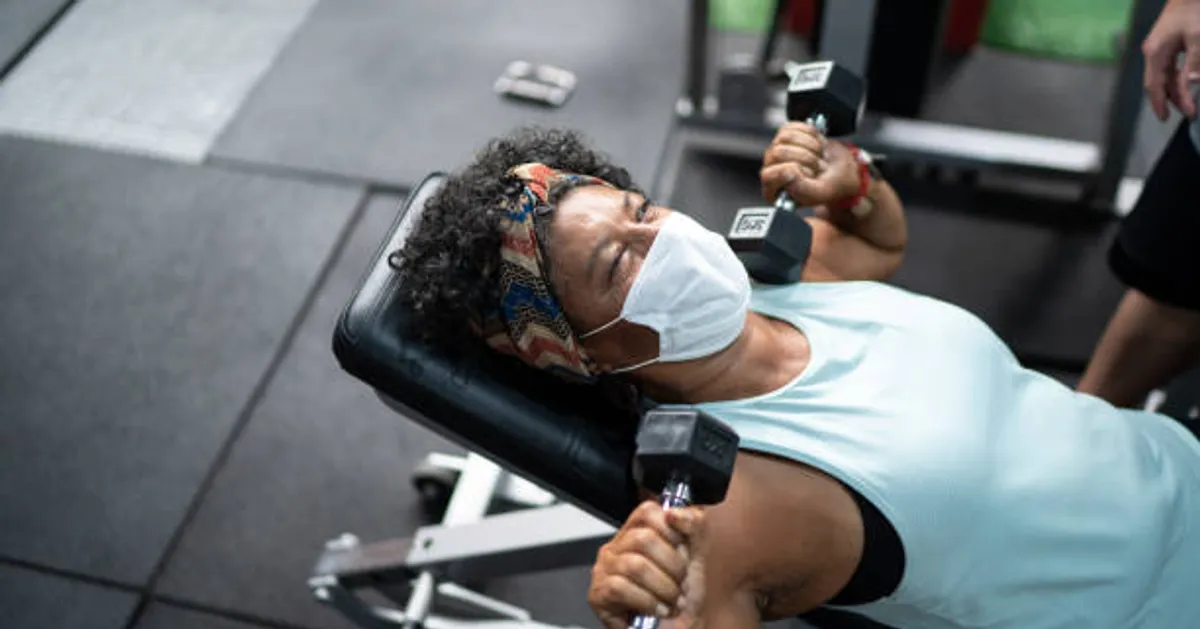
What Happens to Your Body When You Start Lifting Weights After 50

GeokHub
Contributing Writer
Starting weightlifting after age 50 can transform your physical and mental health, countering age-related decline and boosting quality of life. Strength training offers unique benefits for older adults, from preserving muscle mass to improving heart health, but it also requires caution to avoid injury. Here’s a breakdown of what happens to your body when you begin lifting weights after 50, backed by science, along with practical tips to get started safely.
1. Muscle Mass and Strength Increase
- What Happens: Aging leads to sarcopenia, a natural loss of muscle mass at a rate of 1–2% per year after 50. Weightlifting stimulates muscle protein synthesis, helping rebuild and maintain muscle. A 2023 Journal of Gerontology study found that adults over 50 who lifted weights three times weekly for 12 weeks gained 3–5% muscle mass and up to 15% strength.
- Benefits: Stronger muscles improve daily tasks like carrying groceries or climbing stairs, enhancing independence.
- Tips: Start with light weights (5–10 lbs) for exercises like bicep curls or squats, aiming for 2–3 sets of 10–12 reps, twice weekly. Focus on compound movements (e.g., deadlifts, bench presses) to engage multiple muscle groups.
2. Bone Density Improves
- What Happens: Weightlifting stresses bones, triggering osteoblast activity to build bone density. A 2022 Bone study showed that resistance training increased hip and spine bone density by 2–4% in adults over 50 after six months, reducing osteoporosis risk.
- Benefits: Stronger bones lower fracture risk, critical as 1 in 2 women and 1 in 4 men over 50 experience osteoporosis-related breaks.
- Tips: Include weight-bearing exercises like lunges or overhead presses. Consult a doctor if you have osteoporosis before starting.
3. Metabolism Boosts
- What Happens: Muscle is metabolically active, burning more calories at rest. A 2021 Metabolism study found that older adults who lifted weights increased their resting metabolic rate by 5–7%, aiding weight management.
- Benefits: A higher metabolism helps combat age-related weight gain, with obesity rates rising from 23% at age 50 to 29% by 60.
- Tips: Combine lifting with a balanced diet (20–30g protein per meal) to maximize muscle growth and calorie burn.
4. Joint Health and Mobility Enhance
- What Happens: Strength training strengthens muscles around joints, reducing strain. A 2023 Arthritis Care & Research study reported a 20% reduction in joint pain and stiffness in adults over 50 after 12 weeks of resistance training.
- Benefits: Improved mobility reduces fall risk, a leading cause of injury in older adults, with 1 in 4 over 65 falling annually.
- Tips: Use controlled movements and avoid locking joints. Start with bodyweight exercises like wall push-ups if joints are sensitive.
5. Heart Health Improves
- What Happens: Lifting weights lowers blood pressure and improves circulation. A 2022 Journal of the American Heart Association study found that moderate resistance training reduced systolic blood pressure by 5–10 mmHg in adults over 50.
- Benefits: Lower cardiovascular risk, as heart disease remains the top cause of death for those over 50.
- Tips: Pair strength training with 150 minutes of weekly aerobic exercise, like brisk walking, for optimal heart benefits.
6. Mental Health and Cognitive Function Lift
- What Happens: Weightlifting boosts brain-derived neurotrophic factor (BDNF), supporting neuron growth. A 2021 Neurobiology of Aging study showed a 10% improvement in memory and executive function in older adults after six months of strength training.
- Benefits: Reduced risk of cognitive decline, with 15% of adults over 70 showing early dementia signs. Laughter-like endorphin release also eases stress.
- Tips: Train in a group or gym for social interaction, which enhances mental benefits.
7. Potential Risks and Precautions
- Risks: Overtraining or improper form can lead to injuries like strains or tendonitis, especially with weaker connective tissues after 50. A 2020 Sports Medicine study noted a 10% injury rate in novice lifters over 50 without proper guidance.
- Precautions:
- Consult a doctor before starting, especially with heart or joint issues.
- Work with a certified trainer to learn proper form.
- Begin with low weights and progress gradually (5% weight increase every 2–3 weeks).
- Warm up for 5–10 minutes and stretch post-workout to prevent stiffness.
Practical Tips to Start Lifting After 50
- Beginner Routine: Try 2–3 weekly sessions (30–45 minutes) with exercises like squats, chest presses, and rows, using light dumbbells or resistance bands.
- Progress Safely: Increase weight or reps only when exercises feel easy, aiming for 10–12 reps per set.
- Rest and Recover: Allow 48 hours between sessions for muscle recovery; prioritize 7–8 hours of sleep.
- Nutrition: Eat 1.2–2.0g of protein per kg of body weight daily (e.g., eggs, chicken, beans) to support muscle repair.
- Stay Consistent: Aim for 12–16 weeks to see noticeable strength and health gains.
Developing Story
Weightlifting after 50 is a game-changer for health, but ongoing research continues to refine its benefits and risks for older adults. Start slow, prioritize safety, and consult professionals to maximize results. Note: Benefits and risks are based on peer-reviewed studies; individual outcomes vary, so seek medical advice for tailored plans








